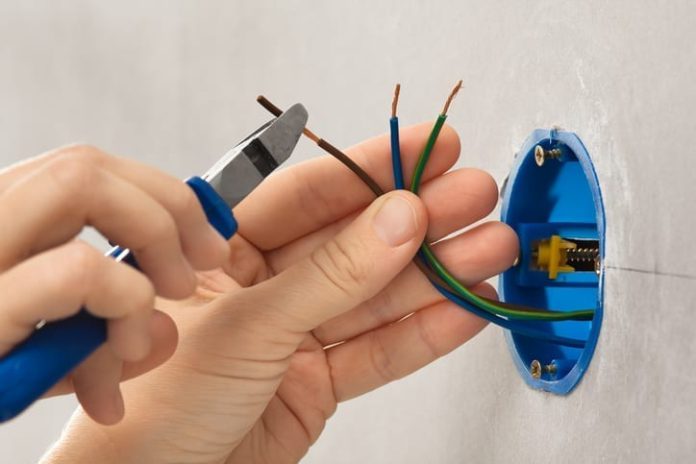Do you live in an old house that has not had an electrical inspection recently? Your home may be due for a check, especially if you are using many modern electronic devices at one time. The electrical system of your house may be outdated and unable to support multiple appliances and increasing loads.
Most electricians recommend that you get an electrical check every three to five years. The inspection usually involves checks and testing to determine if all the electrical components in the house are working properly.
You will receive an electrical installation condition report after the inspection. This report will indicate damage, unsafe conditions, and non-compliance with safety standards that could be dangerous.
An electrician should check your house every few years. Source
What Types of Checks Do You Need To Do?
If you are experiencing the following, you probably have an electrical problem in your house:
- Your lights flicker when you turn on electrical appliances
- Outlets and switches in your house no longer work properly
- Fuses blow and circuit breakers trip constantly
You should regularly monitor the sockets, cables and switches in your home. If you notice any changes or potential problems, such as fuses blowing or burn marks on plugs and sockets, contact a registered electrician to perform an electrical check. You can find out more here.
Check the items on this list once a year to ensure your wiring and fixtures are working:
- Inspect your main electrical panel and the area around it. There must be three feet of clear space around it, and a battery-operated source of light must be readily available if the electricity goes out. Examine the breakers for rust or rodent activity. Make sure that none of the circuit breakers stick when you flip them on and off, as this will prevent them from working correctly.
- You can check the safety of your outlets by using a cube or block tester. Plug this device into your outlet and it will display lights which will indicate the most common wiring issues.
- If you have visible wires in your basement or attic, look them over and make sure they don’t have cracks, splits or evidence that rodents have been chewing on them. Repair any damaged wires and make sure you eradicate rodent activity as soon as possible to prevent further issues.
- Examine your house’s exterior outlets and ensure that animals can’t get into them and that they’re sealed against the elements.
- It’s also essential to have outlets that are resistant to tampering, especially if you have small children. Outlets that can be reached by children must have an interior shield that prevents foreigh objects from being inserted and also to prevent shocks. If an outlet is tamper resistant, it will have a plastic barrier behind the receptacle openings.
- If a plug is loose in an outlet, especially if they slip out, you should replace the outlet.
- Observe how your electronic devices are behaving. If you notice unusual changes such as flickering lights, the voltage of the outlet should be checked. The issue might be minor, like a loose wire. A voltmeter or multimeter can be used to get a power reading at the outlet. The reading should be between 110 and 130 volts for 120-volt residential outlets. If the reading is outside this range, you need to consult an electrician. Add a power supply to take care of your appliances. Bravo Electro has different kinds and you might be interested.
Final Thoughts
If you monitor your electrical appliances, cables, sockets, and switches on a regular basis, you should notice any problems before they become a dangerous hazard. If anything seems suspicious, contact an electrician to perform a thorough check.
If you find and repair problems early, you can prevent unsafe conditions in your household, as well as dangerous non-compliance with safety standards.














